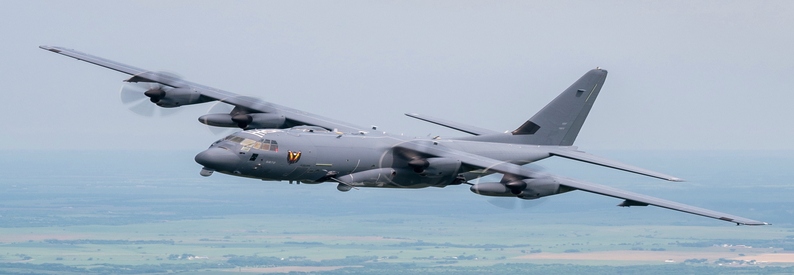NOAA Orders C-130J Aircraft for Hurricane Research

The National Oceanic and Atmospheric Administration (NOAA) has announced the acquisition of two new C-130J Hercules aircraft from Lockheed Martin, enhancing its capabilities in hurricane research and monitoring. These aircraft will serve as advanced “hurricane hunter” vehicles, equipped with state-of-the-art research instruments designed to collect and process critical atmospheric data.
The C-130J aircraft will be customized with a range of specialized equipment, including multi-mode radar, vertically scanning Doppler radar, and automated dropsonde launchers. These modifications will enable NOAA scientists to gather comprehensive meteorological data, improving the agency’s ability to monitor and analyze hurricane activity. Additionally, the aircraft will feature high-speed internet connectivity, allowing for real-time data transmission and analysis during missions.
According to NOAA, deploying aircraft to track hurricanes significantly enhances the accuracy of forecasting. Research indicates that the use of these specialized aircraft can improve hurricane track forecasts by 15 to 20% and intensity forecasts by 10 to 15%. This enhanced accuracy is crucial for preparing communities and mitigating the impact of hurricanes on lives and property.
The two new C-130J aircraft are expected to enter service by 2030, replacing NOAA’s aging fleet of WP-3D Orion aircraft, which have been conducting hurricane research since the 1970s. The transition to the C-130J model marks a significant upgrade in technology and capabilities for NOAA. Like their predecessors, these new aircraft will be stationed at NOAA’s facility in Lakeland, Florida, strategically positioning them to respond quickly to developing weather systems in the Atlantic and Gulf regions.
The C-130J Hercules is known for its versatility and performance in various operational environments. The aircraft’s ability to operate in challenging conditions makes it an ideal choice for hurricane research missions, allowing NOAA to fly closer to storm nuclei than traditional methods permit. This proximity provides invaluable data that enhances understanding of hurricane dynamics and improves forecasting models.
NOAA’s investment in these advanced aircraft underscores the agency’s commitment to leveraging cutting-edge technology in its ongoing efforts to protect lives and property from severe weather. As climate change continues to influence weather patterns, the need for precise forecasting and timely warnings becomes increasingly vital. The C-130J’s enhanced capabilities will play a crucial role in NOAA’s mission to provide accurate weather predictions and support disaster preparedness initiatives.
As the 2030 deployment date approaches, NOAA will begin preparations for integrating the new aircraft into its operational fleet. This transition marks a significant step forward in the agency’s hurricane research capabilities, ensuring that it remains at the forefront of atmospheric science and meteorological research.
With the acquisition of the C-130J Hercules, NOAA is poised to improve its hurricane forecasting accuracy, ultimately contributing to better preparedness and response strategies for communities vulnerable to tropical storms and hurricanes. This initiative reflects NOAA’s ongoing commitment to using innovative solutions to address the challenges posed by extreme weather events in an evolving climate landscape.
Related News : https://suspicious-zhukovsky.67-21-117-18.plesk.page/?s=NOAA
